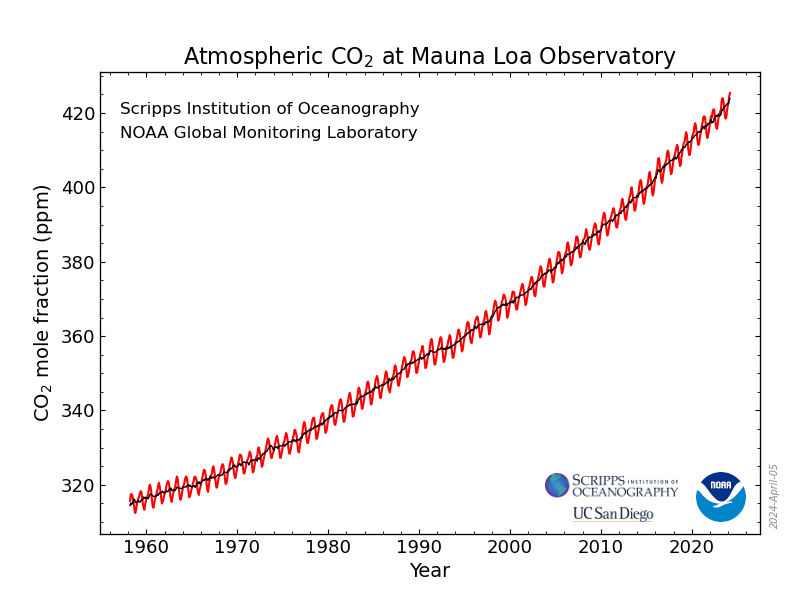Atmospheric Carbon Dioxide (CO2) Measure
Jump to navigation
Jump to search

An Atmospheric Carbon Dioxide (CO2) Measure is an gas measure of atmospheric Carbon Dioxide.
- …
- Example(s):
- Counter-Example(s):
- See: Industrial Revolution, Ocean Acidification, Carbon Dioxide, Atmosphere of Earth, Carbon Cycle.
References
2019
- (Wikipedia, 2019) ⇒ https://en.wikipedia.org/wiki/Carbon_dioxide_in_Earth's_atmosphere Retrieved:2019-6-14.
- Carbon dioxide () is an important trace gas in Earth's atmosphere. It is an integral part of the carbon cycle, a biogeochemical cycle in which carbon is exchanged between the Earth's oceans, soil, rocks and the biosphere. Plants and other photoautotrophs use solar energy to produce carbohydrate from atmospheric carbon dioxide and water by photosynthesis. Almost all other organisms depend on carbohydrate derived from photosynthesis as their primary source of energy and carbon compounds. absorbs and emits infrared radiation at wavelengths of 4.26 µm (asymmetric stretching vibrational mode) and 14.99 µm (bending vibrational mode) and consequently is a greenhouse gas that plays a significant role in influencing Earth's surface temperature through the greenhouse effect. Concentrations of in the atmosphere were as high as 4,000 parts per million (ppm) during the Cambrian period about 500 million years ago to as low as 180 ppm during the Quaternary glaciation of the last two million years. Estimates based on reconstructed temperature records suggests that the amount of during the last 420 million years ago was with ~2000 ppm highest during the Devonian (∼400 Myrs ago) and Triassic (220–200 Myrs ago), with a few maximum estimates ranging up to ∼3,700±1,600 ppm (215 Myrs ago). Global annual mean concentration has increased by more than 45% since the start of the Industrial Revolution, from 280 ppm during the 10,000 years up to the mid-18th century to 415 ppm as of May 2019. The present concentration is the highest for 14 million years. The increase has been caused by human activities, particularly the burning of fossil fuels and deforestation. This increase of and other long-lived greenhouse gases in Earth's atmosphere has produced the current episode of global warming. About 30–40% of the released by humans into the atmosphere dissolves into oceans, rivers and lakes, which has produced ocean acidification.
2013
- https://phys.org/news/2013-03-link-co2-mass-extinctions-species.html
- QUOTE: It's has been know that massive increases in emission of CO2 from volcanoes, associated with the opening of the Atlantic Ocean in the end-Triassic Period, set off a shift in state of the climate which caused global mass extinction of species, eliminating about 34% of genera. The extinction created ecological niches which allowed the rise of dinosaurs during the Triassic, about 250-200 million years ago.
New research released this morning in Science Express has refined the dating of this wave of volcanism. It shows marine and land species disappear from the fossil record within 20,000 to 30,000 years from the time evidence for the eruption of large magma flows appears, approximately 201 million years ago. These volcanic eruptions increased atmospheric CO2 and increased ocean acidity.
- QUOTE: It's has been know that massive increases in emission of CO2 from volcanoes, associated with the opening of the Atlantic Ocean in the end-Triassic Period, set off a shift in state of the climate which caused global mass extinction of species, eliminating about 34% of genera. The extinction created ecological niches which allowed the rise of dinosaurs during the Triassic, about 250-200 million years ago.

